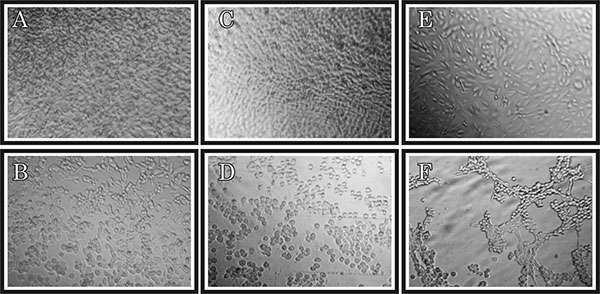Volume 9, Number 2—February 2003
Dispatch
Infection of Cultured Human and Monkey Cell Lines with Extract of Penaeid Shrimp Infected with Taura Syndrome Virus
Figure 1

Figure 1. Image of mammalian cell lines injected with extracts from healthy shrimp: A, human rhabdomyosarcoma (RD), Cep-2C, BGM RD cells; C, human larynx carcinoma (Hep-2C) cells; E, BGM cells. Cytophatic effect in cultured cells inoculated with extracts from shrimp affected with Taura syndrome: B, RD cells; D, Hep-2C cells; F, BGM cells.
Page created: December 07, 2010
Page updated: December 07, 2010
Page reviewed: December 07, 2010
The conclusions, findings, and opinions expressed by authors contributing to this journal do not necessarily reflect the official position of the U.S. Department of Health and Human Services, the Public Health Service, the Centers for Disease Control and Prevention, or the authors' affiliated institutions. Use of trade names is for identification only and does not imply endorsement by any of the groups named above.